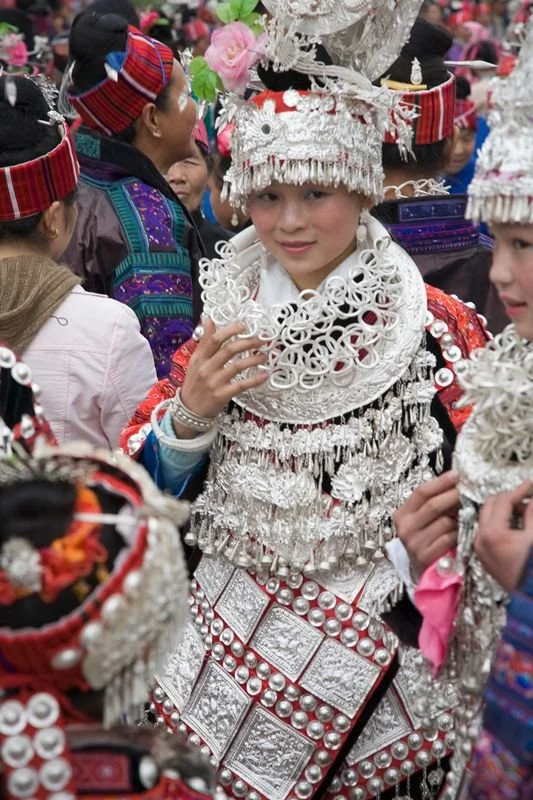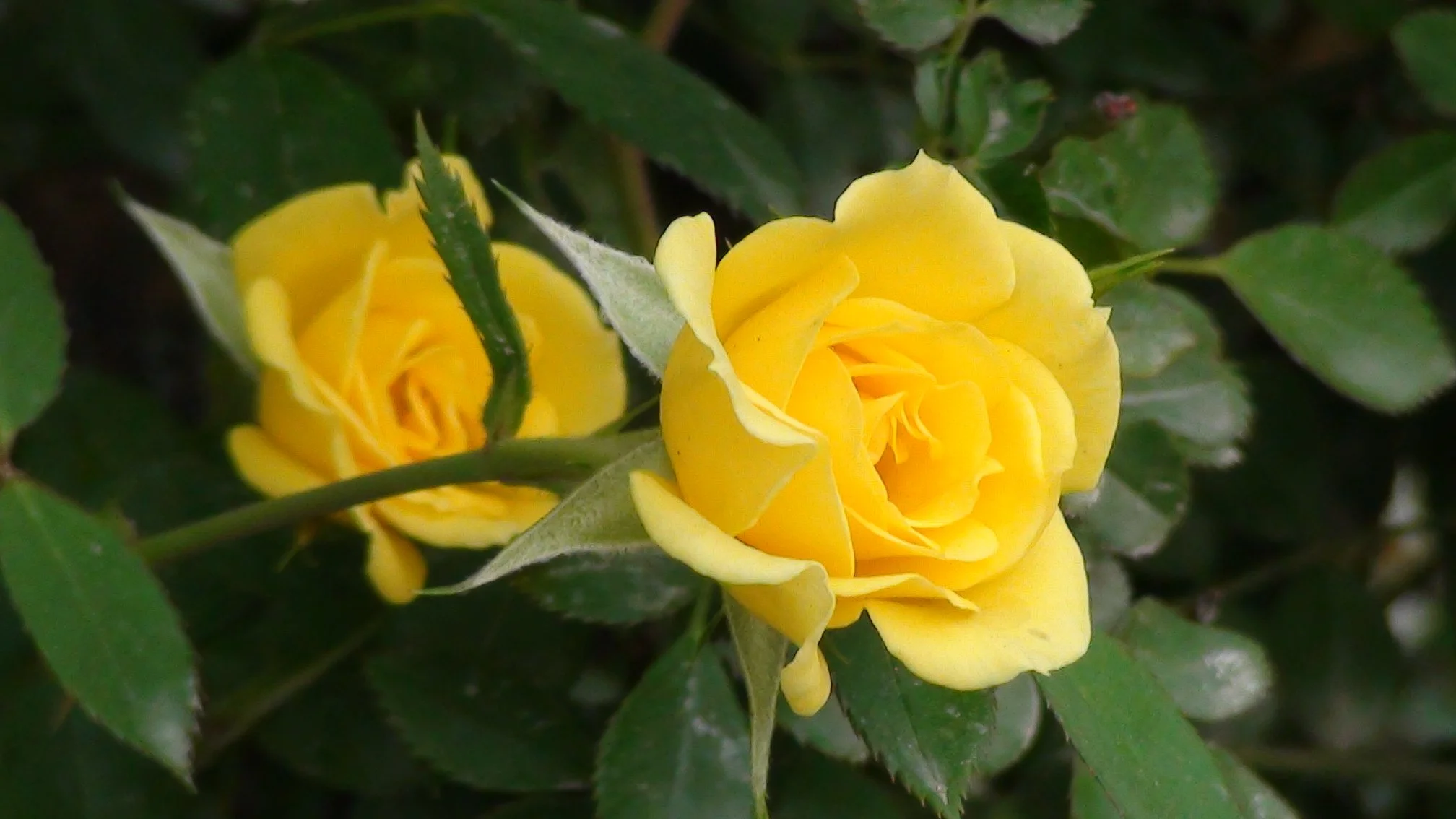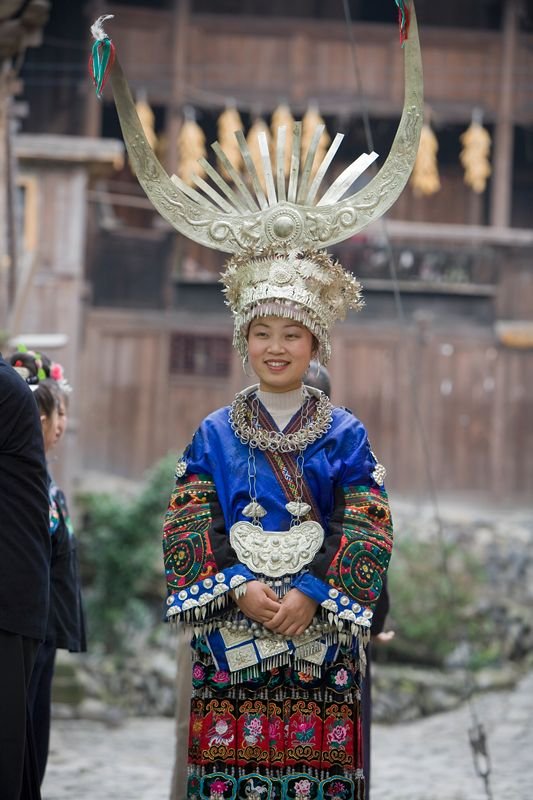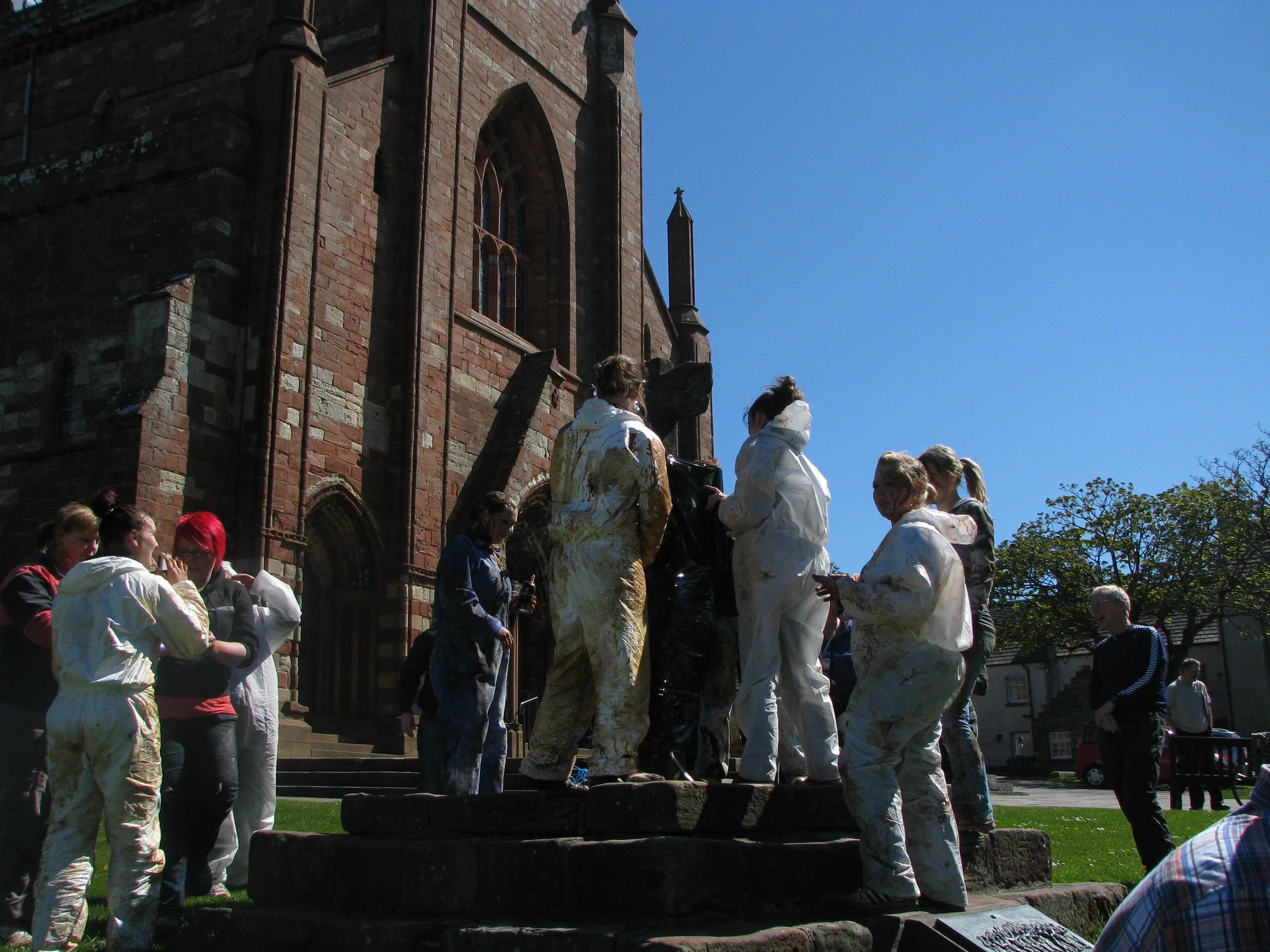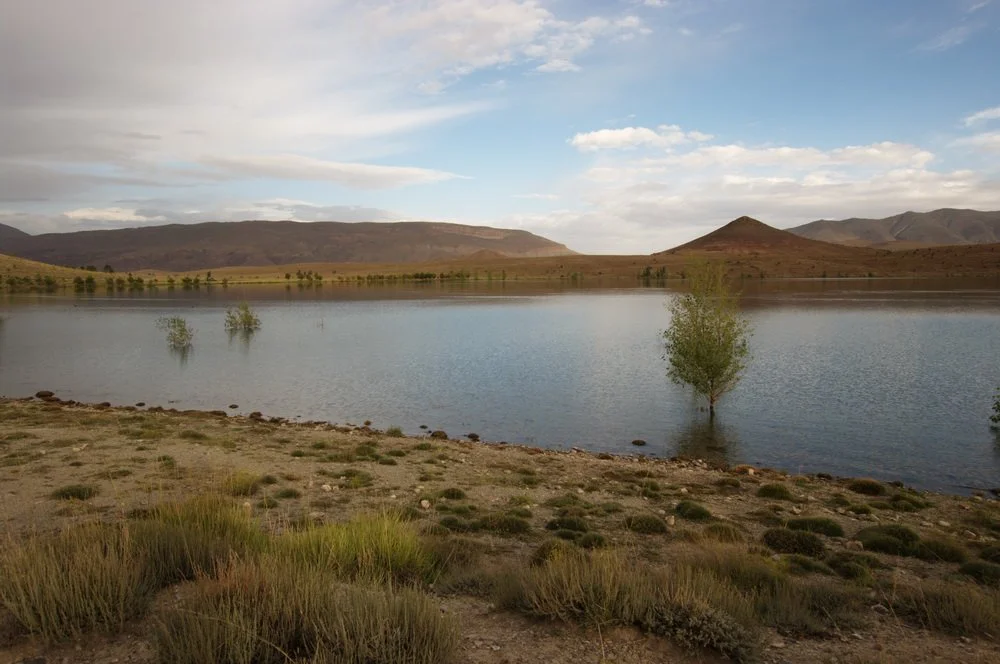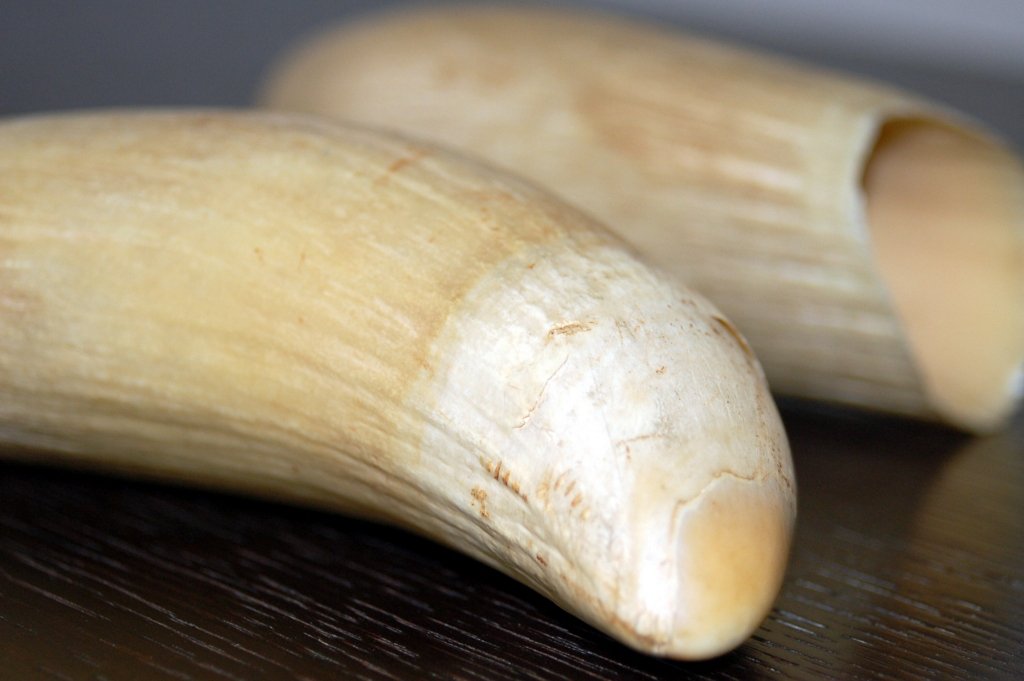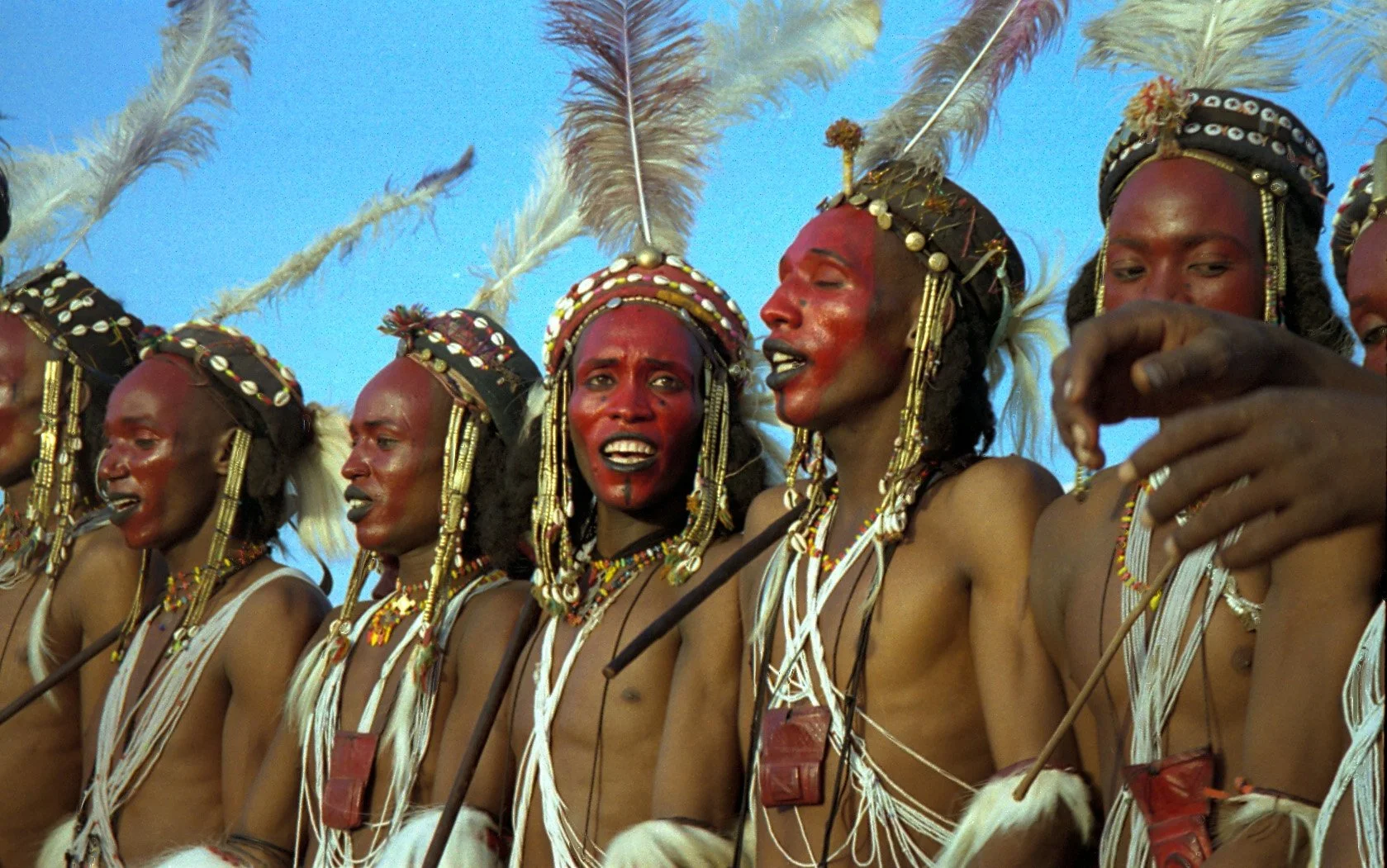Exploring the unique ways different cultures express love.
Full Festive Attire May Include 30-40 pieces of silver ornaments. Minneapolis Institute of Art. CC BY-NC-SA 2.0,
For the entire Sisters’ Meal Festival you’ve been courting the same girl. She’s funny, sweet, and beautiful, and whenever you talk to her intelligent thoughts seem to slip away. You think she likes you back, but you’re not sure. As you approach her on the final day you see that she is holding a handkerchief out to you. As soon as she is out of sight you open it, revealing bright pink sticky rice, dyed with the vibrant wildflowers growing in the South China mountains. With bated breath you dig your fingers into the congealed mass, desperately wondering what message it contains. Our eyes widen as you find it, and you can’t help but pump your fist with joy, holding her gift up for everyone to see.
Love is universal, but its expression is not. Each culture has its own romantic traditions, with its own ways of courtship. Here are seven interesting romantic practices in the world.
1. Courting Huts in South Africa
Zulu hut. Arno Meintjes Wildlife. CC BY-NC-SA 2.0.
For Zulu girls courtship starts when a senior woman says they are ready to start dating; parental permission is not required. After confessing her love for a man the two may start “hlobonga,” the Zulu courting period, during which they can spend evenings together.
Officially, for conservative Zulu fathers, the hlobonga does not exist, and he will not let his daughter’s partner into his house. However, to allow the pair to still see each other, the father builds them a special courting hut. This is a win for both sides, meaning the couple can meet in pseudo-secrecy and the girl’s family can claim to be ignorant of the relationship.
2. Monthly Couple Holidays in South Korea
Yellow Rose Flowers, Sridhar Rao, CC BY-SA 4.0.
In South Korea it's hard to escape romance. On the 14th of every month there is a different romantic Holiday. The year starts in January with Diary Day, where couples get yearly planners to write down fond memories and plan the upcoming year’s date nights. From there it goes to Valentine's Day in February where women buy men presents. In March, on White Day, men return the favor. The one day designed for singles is in April, on what is called Black Day, when singles eat black bean paste noodles together. This is followed by Rose Day in May when couples dress in yellow and exchange yellow roses.
The next two Holidays, in June and July, are Kiss Day and Silver Day, respectively. Next, in August is Green Day, where you drink a Green Bottle of Soju outdoors. In September, October, and November there are Photo and Music Day, Wine Day, and Movie Day. Finally, the year ends in December with Hug Day, where couples can cuddle to stay warm.
3. Sisters’ Meal Festival in China
A Miao Festival in Guizhou, China. Minneapolis Institute of Art. CC BY-NC-SA 2.0.
On the 15th day of the 3rd month in the Lunar Calendar, the Miao people of Southwest China celebrate the Sister’s Meal Festival. It lasts three Days and is China’s oldest romantic celebration.
Legend has it the holiday started when two cousins fell in love. The girl had already been promised to another cousin, however, and the two weren’t allowed to marry. She refused to give up her original love, and brought him rice in a bamboo basket in secret, while he brought her needle and thread. Eventually, the secret couple’s families relented and permitted them to marry.
In today’s Sister Meals Festival, single men court single women. After the courting period, the women will give the men brightly colored dyed rice in a handkerchief. In the rice, the women hide a gift with a special meaning. If there are pine needles in the rice, the men should give the women yarn and needles. If there is a bamboo hook, the man should contact the woman. If there are chinese toon sprouts or chinese parsley, the woman wants to marry the man. Unfortunate men receive garlic or pepper , signaling that the woman isn’t interested.
4. “Blackening” of the Bride
The Blackening. Librarychik. CC BY-NC-SA 2.0.
This Scottish ritual started innocently in the 19th century, with a bride’s feet being cleaned with soot before marriage. From there, by the early 20th century it evolved to the much more rowdy version we see today, where the bride, and sometimes the groom, run away from family and friends. When caught they are pilloried, doused in tar and feathers or covered in some other sort of trash. The current tradition, far from the cleaning ritual it used to be, is meant to signify that marriage will not be easy.
5. Imilchil Marriage Festival
Lac Tislite (Imilchil). Deunvistazo. CC BY 2.0.
Years ago, in Morocco, it is said that two people from enemy tribes fell in love. When they weren’t allowed to marry they wept and wept until they drowned in their own tears, forming the lakes “Isli” and “Tislit,” meaning “bridegroom” and “bride” respectively. The lakes are separated by a mountain, signifying that even in death their souls are apart.
Tradition holds that in response to this tragedy the Berber people began the Imilchil Marriage Festival, where men and women were allowed to marry whomever they choose. Each September, almost 30,000 people gather for this ceremony. When courting each other, a nod and wink is the unspoken way for men and women to show interest. Once a woman gestures her interest to a man, the pair may hold hands. However, if they let go of each other’s hands, it is seen as a form of rejection. When a woman is ready to marry she will tell the man “you have captured my liver,” signaling she has found her love, as the liver promotes well being.
6. Gifting Sperm Whale Teeth in Fiji
Sperm whale teeth. Kqedquest. CC BY-NC 2.0.
In Fijian “Tabua”, a word for Sperm Whale Teeth, translates roughly to “sacred.” They are a necessary gift for marriage in many families, as the teeth represent good luck, and may even contain supernatural powers. Traditionally, Fijians would trade with neighboring nation Tonga for whale teeth.
Currently, however, whaling is banned in Tonga and Fiji itself has increased its restrictions, making sperm whale teeth rare and expensive. Because of this, men often save up for a long time to buy them, and presenting multiple teeth to their potential bride is a way for men to demonstrate their wealth.
7. Male Beauty Pageant in Niger
Wodaabe People. Dan Lundberg. CC BY-SA 2.0.
Every year in Niger the Wodaabe people host the Gerewol Beauty Pageant, where men are judged by an all female panel. The men put on black lipstick and red face paint and dance for hours to impress the women, being judged on their height, teeth, and overall beauty. At the end of the ceremony each judge picks one man to be her lover. Marriage happens young with the Wodaabe People, so even if a woman is already married, it is acceptable for her to take another lover. The length of this new courtship is not determined, and can last as short as a day or become a lifelong marriage.
Jeremy Giles
Jeremy is a Writing Seminars and International Studies major at Johns Hopkins University. He is an avid writer and the Co-Founder of Writers’ Warehouse, Johns Hopkins’ first creative writing group. He is an advocate for Indigenous rights, and studies how Indigenous philosophies can be used to help prevent climate change. Using his writing, he hopes to bring attention to underrepresented voices in today’s world.

